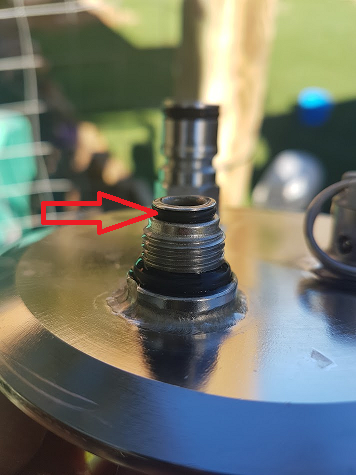If your transferring at room temp. Eg 20 degrees, you will want the receiving keg at least 22-24 psi or more as the supply keg will be at 24-28 psi depending on carb level. Any less in the receiving keg will be causing foaming in the lines, as well as a very frothy beer in the receiving keg due to co2 escaping out at low pressure due to temp etc.
I pressure transfer cold normally , supply keg carbonated and sitting at 12-14 psi. Receiving keg purged and sitting at same psi click on, click spunding on and dial back 3-4 psi and let goodness flow, while watching condensation line creep up. Works great with my 50 ltr kegmenters.
For camping trips, I cart 19 ltr cornies at room temp and they sit at approx 24-28 psi depending on temps, 18 -30 degrees.
I pressure transfer from these warm into my 5 ltr minis that were pressure upto same pressure as warm kegs but use the loop and grav system as I just want 4-5 ltrs into a mini for beers that night . Co2 back into main warm keg at 28 psi or whatever, mini filled and then chilled in camp waeco. Works a treat, only need refrigeration for 1 mini keg whilst still carting plenty of stock away at room temp.
As long as the orings and disconnects are good, you will get no foaming at the right pressure for the right temp.
As others have stated above, if using a spunding valve , adjust slowly , and when say 80-90%full, un click it and just little pulls of the pressure relief valve and wait a few secs in between to let the keg fill remainder up.
Room temp transfers will need to be higher pressure.
I recommend , from plenty of these.
At chilled temps, 12-14 psi main keg, receiving the same and when all connected adjust spunding back 3-4 psi max or if doing closed loop gravity way then keep same pressure and purged keg.
At room temps, 24-28 psi depending on carb level and temp of beer, receiving keg same pressure and 3 psi less max on spunding valve method or closed loop same pressure.
Warm pressure transfers work great if done correctly and the beers are great still and same carb level as the host keg, perfect for trips away. With no waste of co2 if using the closed loop system and the beauty is when the mini runs out, leave residual 12 psi inside it, don't open, repressure to same as supply keg, click on lines and fill with warm necter the next day, then back into ice of esky for night fun. No waste or mess.
Cold transfers works great at home as my kegmenters are 50 ltr so filling my cornies and minis are done cold then into my keezer or off to BBQ or whatever..
Just be mindfull, if doing transfers at room temps, then make sure you got good disconnects, orings, lubed connections and well crimped transfer lines gas and liquid due to the higher pressure involved.
Cheers





